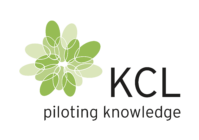Introduction to KCL’s Sustainable Practices
At KCL, we are committed to advancing sustainable practices in the production of nanocellulose. Our approach is rooted in the principles of environmental stewardship, aiming to minimise our ecological footprint while delivering high-quality products. By leveraging renewable resources and innovative technologies, we ensure that our production processes are not only efficient but also environmentally friendly.
Our extensive experience in nanocellulose materials has enabled us to develop a unique piloting platform and comprehensive laboratory services. These services support product development processes across diverse value chains within the bioeconomy. This commitment to sustainability is reflected in every aspect of our operations, from raw material sourcing to the final product.
In this blog post, we will delve into what makes KCL’s nanocellulose production environmentally friendly. We will explore our sustainable practices, the production process, the environmental benefits of using nanocellulose, and the innovations and technology behind our eco-friendly approach. Additionally, we will compare our methods to traditional production methods and discuss our future perspectives and sustainability goals.
The Production Process of KCL’s Nanocellulose
Our nanocellulose production process begins with the use of industrial agro sidestreams, specifically sugar beet pulp, a by-product of the sugar industry. This choice of raw material is a key factor in our sustainable approach, as it utilises a renewable resource that would otherwise go to waste. By repurposing this sidestream, we contribute to a circular economy and reduce the demand for virgin materials.
After sourcing the sugar beet pulp, we remove lignin and hemicellulose through a series of environmentally friendly processes. This step is crucial in preparing the raw material for fibrillation. Unlike traditional methods that may rely on chemical treatments, our process is purely mechanical, ensuring that no harmful chemicals are introduced into the environment.
The fibrillation process itself is energy-efficient and has a low carbon footprint. By employing advanced mechanical techniques, we are able to produce microfibrillated cellulose (MFC) that meets the requirements of various applications. This careful design and execution of our production process underscore our commitment to sustainability and environmental responsibility.
Environmental Benefits of Using Nanocellulose
Nanocellulose offers numerous environmental benefits, making it an attractive alternative to traditional materials. One of the primary advantages is its ability to increase the strength and stiffness of paper products. This enhancement allows for substantial savings in material usage during production, leading to a reduction in resource consumption and waste generation.
Additionally, our MFC can be used as a natural binder in coating formulations, replacing synthetic latexes and other barrier materials. This substitution not only reduces the reliance on petroleum-based products but also decreases the environmental impact associated with their production and disposal. By opting for nanocellulose, manufacturers can achieve more sustainable and eco-friendly products.
Furthermore, the biodegradability of nanocellulose ensures that it does not contribute to long-term environmental pollution. Unlike synthetic materials that persist in the environment for extended periods, nanocellulose breaks down naturally, minimising its ecological footprint. This characteristic aligns with our goal of promoting sustainable and responsible production practices.
Innovations and Technology Behind Eco-Friendly Nanocellulose
At KCL, we continuously invest in research and development to enhance our nanocellulose production processes. Our innovative approach involves the use of cutting-edge technology and advanced mechanical techniques to achieve high-quality MFC with minimal environmental impact. This commitment to innovation is a cornerstone of our sustainable practices.
One of the key technological advancements in our production process is the optimisation of energy usage. By employing energy-efficient machinery and processes, we are able to reduce our overall energy consumption and carbon emissions. This focus on energy efficiency not only benefits the environment but also contributes to cost savings, which can be passed on to our customers.
Additionally, our state-of-the-art laboratory services enable us to conduct thorough testing and quality control, ensuring that our nanocellulose products meet the highest standards. This rigorous approach to quality assurance is essential in maintaining the integrity and sustainability of our production processes.
Comparing KCL’s Methods to Traditional Production Methods
Traditional nanocellulose production methods often rely on chemical treatments and non-renewable resources, resulting in significant environmental impacts. In contrast, our approach at KCL prioritises the use of renewable resources and mechanical processes, which are inherently more sustainable and eco-friendly.
For instance, the use of sugar beet pulp as a raw material not only repurposes an industrial by-product but also reduces the need for virgin materials. This choice aligns with our commitment to a circular economy and minimises the environmental footprint of our production processes. Additionally, our mechanical fibrillation process eliminates the need for harmful chemicals, further reducing our ecological impact.
Moreover, the energy efficiency of our production methods sets us apart from traditional approaches. By optimising energy usage and minimising carbon emissions, we are able to produce high-quality nanocellulose with a lower environmental cost. This focus on sustainability is a defining feature of our production processes and underscores our dedication to environmental responsibility.
Future Perspectives and Sustainability Goals of KCL
Looking ahead, we at KCL are committed to further advancing our sustainability goals and enhancing our environmentally friendly practices. Our future perspectives include ongoing research and development to improve the efficiency and sustainability of our nanocellulose production processes. By staying at the forefront of innovation, we aim to continue delivering high-quality, eco-friendly products to our customers.
One of our key sustainability goals is to expand the use of renewable resources in our production processes. By exploring new raw materials and optimising existing ones, we aim to further reduce our reliance on non-renewable resources and minimise our environmental impact. This commitment to renewable resources is central to our vision of a sustainable future.
Additionally, we are dedicated to fostering collaborations and partnerships that promote sustainability within the bioeconomy. By working closely with our customers and stakeholders, we aim to drive positive change and contribute to a more sustainable and environmentally responsible industry. Our commitment to confidentiality, expertise, flexibility, and high quality will continue to guide our efforts as we strive to achieve our sustainability goals.
